#balkan paganism
Text
The Horned Serpent
So before I get started on this one, I have a couple of things to get out of the way. First, I will be using she/her pronouns for the Horned Serpent; this is just because UPG and because I'm used to it. I know someone else who venerates/worships the Horned Serpent, uses they/them pronouns for them, and considers them to be beyond gender / present as whatever gender they feel like. Second, I will be focusing on my interpretation of her on the Gundestrup Cauldron, in part because there's really not a lot of literature on her, even when you include works that specifically analyze Cernunnos' depictions. Third (and related), I will be using the National Museum of Denmark's estimate as to when/where the Gundestrup Cauldron was made, which is roughly in the Danubian or Wallachian Plain(s) around 150 BCE to 1 CE (link).
So first a little historical & cultural context. This area, as far as culture groups, would have been a heck of a melting pot, between the Dacians and Thracians that already lived there, the Scythians coming in and also living near by, the Gauls that moved in around the 300s-200s, the Greeks who came up and started establishing colonies along the Black Sea in the 300s, and the Romans, encroaching on everyone's business around the time the Cauldron was built. A pretty solid primer on the history of the region is A Companion to Ancient Thrace, published by Wiley Blackwell.
So I'm gonna try to make sense but it might be a little disorganized going forward. Anyway, onto the actual thoughts & stuff. So anyone who's taken even a passing glance at Cernunnos is well aware of the Horned Serpent, since she is present in basically every ancient art you can find with him. On the Gundestrup Cauldron, she appears three times, all on the interior panels. One is at the Hero's heel, who's holding the wheel; a second is at the end of a line of heroic riders, which seems to be a Thracian horseman motif; and of course the famous Cernunnos panel. In Thracian Tales of the Gundestrup Cauldron, published by Najade Press, Jan Best presents an interpretation of the interior panels as a story, and assumes that Cernunnos is singing in his famous panel, specifically about the secrets of immortality, a concept which was very popular at the time. I agree with this and I also assume that the depiction of Taranis / the wheel god is that he is also singing, and if he is singing then the lions and griffins - both predators associated with kingship (griffins were protectors of the pharaoh, and also decorated certain tombs out in ancient Persia), then the action of passing off the Wheel must have symbolic meaning, such as being handed the Wheel of Heaven.
The Gundestrup Cauldron's exterior also has very clear influence from the Scythians, you can almost 1:1 map the gods based on Herodotus's retelling of the Pontic stories. I believe there are also thematic parallels going on here on the Wheel God panel, featuring a new god/king being given the symbol of his domain. Wikipedia actually has some relatively thorough articles on Scythian religion as well as the genealogical myth specifically, which is the myth that I personally associate with the wheel-giving panel. As well, the animals in this panel don't appear to be particularly concerned with attacking anyone - if anything, the griffins and lionesses are slightly tilted from one to the next, which makes me think it's more likely that they are dancing, especially if the human/divine subjects are singing, especially if the human with the helmet is receiving a high honor, potentially his rank amongst the gods. In this panel, she is just at the hero's feet, not really joining the parade if the animals, but clearly not ready to attack either, but her attention does seem to be drawn towards the hero.
The final panel she is on is the panel featuring the nine soldiers and the heroized dead, represented by the "Thracian horseman" motif. After Alexander the Great and his penchant for having statues of himself be on horseback, it became popular for wealthy men and nobles to depict themselves riding horseback to a goddess or sacred tree (unfortunately my best source discussing this in English is also not great and he comes up with some..... questionable theories), but the popularity seems to have blown up to the point where even deities such as Zeus were depicted on horseback in a similar manner. There are also mentions in a few other sources that the Thracians believed in the ability for people to essentially become immortal after death. Unfortunately, I'm having trouble sorting out my notes and this essay has been nagging me for weeks now.
Anyway, I interpret this panel as what is expected to happen to us after we die - the "ordinary", so to speak, are lead to a deity, likely to be reincarnated (this is honestly just a guess on my part largely due to the popularity of that in Greece for ever, and Grecian influence was in full swing by the time the Cauldron was made), meanwhile the "extraordinary" are lead by the Horned Serpent.
This is where I tie all three together to my upg/theology: The Horned Serpent is a friend and ally to Cernunnos. He teaches the secrets of life after death to those who will listen. The Horned Serpent is by his side during his teaching, and when we die, if we have proven ourselves worthy during life, she guides us through the trials of the afterlife. If we succeed in these trials, we are awarded with apotheosis - becoming a god or godlike - and she stands by our side as we earn this prize.


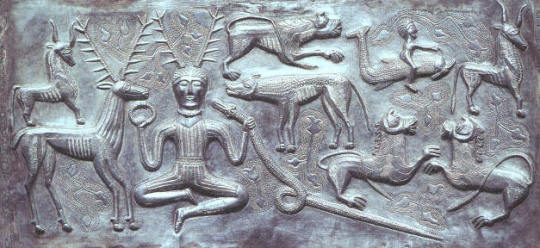
@musingmelsuinesmelancholy sorry it took me so long x.x & I hope this makes sense!
#cernunnos#thracian polytheism#gaulish polytheism#dacian polytheism#scythian polytheism#the horned serpent#balkan paganism#celtic paganism#paganism
19 notes
·
View notes
Text
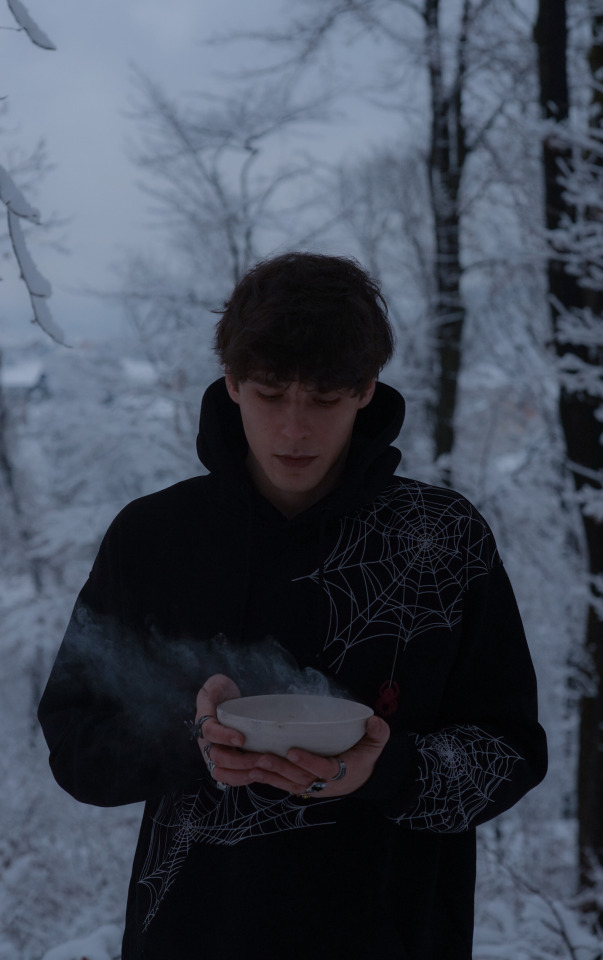
Winter offerings in the forest.
We're in for a dynamic mix of energies this weekend—no kidding. The standout force, heavy, intense, and assertive, is the ongoing Mercury Mars conjunction squared with Chiron throughout the entire weekend.
A standalone Mercury Mars conjunction usually ushers in a positive vibe. We become more enthusiastic, inspired, and geared up for action. However, it also heightens our awareness of sources of irritation and frustrating situations during this period.
In response to these situations, impulsive actions may come to the forefront, a surge of blood to the head, as Mercury and Mars square with Chiron in Aries. This dynamic creates a personal sense of woundedness or a feeling of not being able to attain our desires.
This can lead to the surfacing of frustration and anger, and with the Leo full moon in play, there's an urgent need to express oneself and step into the spotlight. The Sun square to Jupiter boosts confidence and encourages bold self-expression.
The weekend's energy might manifest as pent-up frustration, anger, or a release of intense emotions. Paradoxically, this is exactly what needs to happen—a time to share your feelings, even if it doesn't come out flawlessly.
The prevailing energy suggests that wherever you're harboring hurt, it needs expression. The challenge lies in channeling this energy productively, whether through creativity or thoughtfully sharing your emotions.
For some, the difficulty may arise in conflicts that unfold when speaking their truth. Communication is charged, decisions may be impulsive, but it's an unavoidable moment, driven by the need for necessary changes that involve expressing emotions.
These energies are potent right now, and at the core of the Leo full moon's essence is the acknowledgment of personal value and significance. It's a reminder that we all have something valuable to share. The tension from the Mercury Mars conjunction can serve as a catalyst.
#incense#malewitch#astrology#malewithcesofinstagram#darkphotography#ritual#occult#darksouls#sombrebeings#faeriemagazine#darkaesthetic#folkwitch#traditionalwitchcraft#banefulherbs#spirituality#pagan#imbolc
#imbolc#incense#malewitch#astrology#malewitches#ritual#occult#darksouls#sombrebeings#faeriemagazine#darkaesthetic#folk witchcraft#traditional witchcraft#witchcraft#balkan witchcraft#baneful#herbs#smoke#shamanism#pagan#mythology
53 notes
·
View notes
Link
Putting my anthropology degree to good use and compiling a bunch of credible sources documenting real life Balkan folk magic traditions in one easy, convenient article!
I know so many sources about witchcraft are inaccessible and or culturally appropriative, so I did a lot of research and wrote this easy to digest article covering some basics of South Eastern European folk belief. I’m thinking of writing more articles about various European folk traditions (when I have time!) so this will be an ongoing project. I hope you learn something new and meaningful to incorporate into your craft 💗
An Introduction to Balkan Folk Magic
Like many old world practices, traditional Balkan magic has historically been carried out by cunning folk, healers and seers who were gifted in communicating with the “other world”. These community healers practiced generational family knowledge, remedies and prayers passed down from elders. It is important to note that most cunning folk did not view themselves as witches, rather they were seen as conduits for god’s miracles. Within a historical context, these practitioners very much considered themselves Christian, Muslim, or Jewish. Elements of paganism lingered in many rural regions, though they were absorbed into the social-religious fabric of the day. Rituals performed by cunning folk were typically protective, either preventative or as a treatment for supernatural maladies. Spells shielded people from harm, physically or spiritually.
Many of these traditional healers and diviners were women. They passed down knowledge to their daughters, granddaughters, and nieces. Men weren’t barred from practicing, it was just rarer for them to perform these rituals. These traditions are often tied to the family, home, or the community. Many magical rituals shared common themes, but were often specific to a singular family. The women who performed these rituals and divined their neighbors’ futures are known as bajalica, bajanje, basmara, bajarica, or bajaluša — or “conjurers that heal with words.” Bajalica and those they helped held the belief that spirits have the power to afflict illness, charms, and hexes. Bajalica are the mediators between the spirit and human worlds.
In Serbian folk belief, each family has their own protective spirit or slava. Families would celebrate them with dedicated rituals in which they made offerings of bread, sacred water, wine, and oil, as well as lighting incense and sacred candles. These spirits or saints are associated with the hearth, the heart of the home, which is considered the most sacred ritual space. During healing rituals bajalica call upon the slava, drawing and channeling their power to strengthen spells. These spells typically involve a verbal component, whispered incantations that call upon saints and spirits for help in casting evil away. These verbal formulas are highly specific to each bajalica, often times mumbling well remembered words to rid patients of their misfortune.
Spiritual afflictions are found through various means of divination, digging for the root cause. Divination has long been used to predict the fates of those who seek out the conjurers. These methods include reading tarot, casting beans and interpreting patterns (also known as favomancy), molybdomancy (casting and reading molten lead), reading tea leaves and coffee grounds, and gazing into copper bowls filled with water beneath the moonlight and interpreting patterns in the reflection. Divination was and is, the main way to discover the root of “spiritual sickness”, who hexed whom, if one was afflicted with the evil eye, the urok. Much of Balkan folk belief centers around protection from the evil eye, with the majority of spells dedicated to banishing or warding.
Various regions and countries have their own means of protecting oneself from the evil eye. In Albania people use dordolec, house dolls, that are elaborately dressed and displayed in gardens or atop homes to protect against the malicious urok. In modern times most dordolec are stylized scarecrows or stuffed animals, but the intent is the same. It is believed that the doll reflects the covetous gaze back on the perpetrator and shields the home’s inhabitants. Other amulets in Albania, Serbia, Bosnia, Bulgaria, and various Balkan countries are dried snake heads between two holy medals made of silver, objects made of iron, cloves of garlic, the hand of Fatima or hamsa, and the nazar.
Again, most rituals heavily focus on protection magic — not just from the evil eye, but malevolent spirits as well. Bajalica will employ the ritual use of knives, broom whisks, sickles, and axes in healing and warding spells. Though these are physical implements, they are tokenistic, a form of sympathetic magic. Knives and other sharp implements are used symbolically, cutting away illness and curses from the spiritual self by slashing bowls of water or the air around the afflicted person in increments of 3 or 9. These are considered sacred numbers. After the symbolic cuts are made, the water is spilled at a crossroads away from the home. This leads the evil away from the community.
Healing rituals have many intricate components. Conjurers often employ various herbs in healing and blessing water such as basil, thyme, oregano, Saint John’s-wort, sage, and mugwort. Other healers might cleanse spaces and energies with a smoke bath made of similar herbal blends. Not only do healers use ritual tools, they often perform physical acts, such as performing knot magic and binding spells using colorful yarn. The yarn is typically red, black, or white. White yarn is used in healing rituals, red in binding magic and love spells, and black is used in binding as well — though it is sometimes used for darker, malicious purposes.
The folk practices of South Eastern Europe are heavily entrenched in doing acts of good. Healers serve their communities, curing ailments and casting protective spells. Many of these traditions still exist in some capacity and are practiced equally among Muslim, Christian, and Jewish Balkans. Though many of the rituals have a religious faith based element, they can be adapted to secular, agnostic, or polytheistic belief systems. These practices date back hundreds of years and by choosing to incorporate them into your craft, you are helping keep rich and beautiful traditions alive.
(sources available at the end of linked article)
#folk magic#folk healing#witchblr#witchcraft#balkan folk magic#balkan culture#my writing#eclectic witch#wicca#pagan#divination#tarot#tasseomancy#tasseography#sympathetic magic#book of shadows#grimoire#knot magic#anthropology#beginner witch#baby witch#witchcraft basics#evil eye
494 notes
·
View notes
Text

#mamma mia#aesthetic#summers#greek#greece#italy#meditteranean#eastern europe#balkans#european#european summer#sea#mermaidcore#fairycore#witch#nature#pagan#goddess
62 notes
·
View notes
Photo
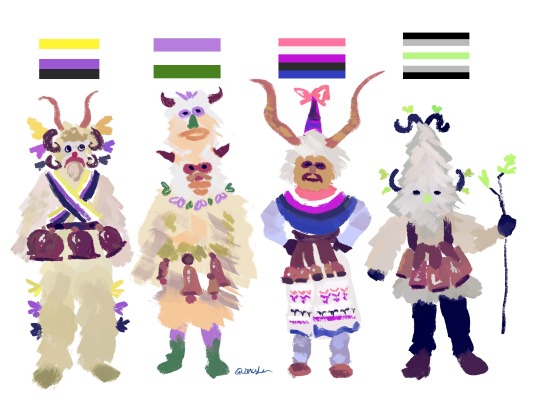
Happy International Non-Binary People’s Day / Non-Binary Awareness week to everyone (and especially to non binary Balkan folks) ! 💛🤍💜🖤
[ID: a digital drawing of four figures wearing Bulgarian kukeri outfits. All of the figures are covered in furs, are wearing ritualistic masks, and have different types of horns. They all wear a belt of bells around their waists. Each of the four figures are wearing slightly different accessories that are coloured with the same colours as four flags: the non-binary flag, the genderqueer flag, the genderfluid flag, and the agender flag. end ID]
#nonbinary#non-binary#nonbinary awareness week#kukeri#bulgaria#balkans#slavic#genderqueer#genderfluid#agender#pagan#lgbt art#eastern europe#lgbtq
346 notes
·
View notes
Text
THE BEGINNING OF THE WORLD - romanian edition

There can be no religion without culture and no culture without religion
(that being said, all cultures around the world have their own myth of creation, pre-christian or any abrahamic religion that has spreaded around the globe)
Our myth speaks of a primordial sea... or, rather a primordial ocean, seeing how big it was. In the darkness of the universe, two beings (twin brothers, most oftenly regarded) watched this sea of nothingness and became inspired.
It's worth to mention these beings names: FÂRTATUL and NEFÂRTATUL (yes, if this second one seems.familiar, it is because after christianity was adopted in the region, it became a nickname for the devil, as it was bad to call the fallen angel by any of his given names: devil or lucifer). But mistake not the paganism, so vague in its lines between good and evil that these notions barely existed as well shaped concepts, with its predecesor. None of the twins is supposed to be seen as purely good or purely evil in romanian mythos.
Fârtatul asked the primordial frog, the first animal he encountered in the vast sea, to swim to its bottom and pluck out some mâl (wet sand). Hence, the land came to be.
But there was just a plain terrain, dry and unlivable. So Fârtatul talked with the primordial hedgehog, the first creature to roam the newly made earth. And it became to walk around, digging with its small paws and claws until water sparked to the surface: rivers, lakes, seas and such on. Where the land creaked under the pressure, valleys formed and the puddle of earth the hedgehog threw behind in its search for water became mountins.
However, the twin brother, Nefârtatul, mumbled about the darkness around (for he kept bumping into things in this new world and couldn't see a thing). Therefore, he made the Sun and the Moon, and so the day and night appeared, lighted more or less by their patron own.
Yet, something still was missing. And both Fârtatul and Nefârtatul tried to fill the gap they felt existed. Each made creatures they soon deemed imperfect. First were the giant CĂPCÂNI (later known in our fairytales as căpcăuni). These were humanoid beings, tall enough to catch their feet into the mountains and fumble to the ground. They had half of a human face and half the one of a dog and they were bad for they were violent and mean.
So the brothers raced again with each other and created the BLAJINI. Cute, sweet, dwarves, as the name enables (blajin in romanian means kind, nice). But they couldn't fetch for themselves and the primordial twins took them into their own realm.
Next came the beings with multiple arms, and even later, the halves/halves (half human, half other animals). Until humans were created.
Legends say both Fârtatul and Nefârtatul created humans at the same time. To be like them in all aspects. Therefore some humans are more like Fârtatul and some, like Nefârtatul (remember, there is no good vs. evil concept here).
<<<<<<<<<<●>>>>>>>>>○<<<<<<<<<●>>>>>>>>>>
more will come soon :)
and also soon i shall find in my mess of a computer and link the sources 😔😪
#romania#romanisme#romanian paganism#romanian myths#romanian culture#romanian folklore#cultures around the world#creation myths#eastern europe#balkan#myths and legends#romanian legends#at the beginning#paganism#believes#ancestors#pls don't let this flop
93 notes
·
View notes
Text
i want to appropriate slavic native faith in the most homosexual transsexual anti-racist pro black pro brown way possible and really grind my heels into it and not let go
why is something that could be so cool so nasty and backwards
how does homophobia and white supremacy make sense for preserving culture
it's the static landscapes and belief in individualism and isolation as supreme above all huh
embarassing
slavic native faith could be cool as FUCK
lets do that
#slavic native faith#rodnovery#slavic paganism#as a note i am slavic so its not really appropriation in the traditional sense but in the sense of reclamation from an outside perspective#from someone in the diaspora who has had wildly different experiences than those in native slavic communities on their ancestral homelands#but who still has every right to claim my ancestral lineage and the ethnic faith that is tied with it#my practice would be particularly influenced by the balkans and the adriatic sea as a croat but we are all connected in being slavic#and having common ancestors who worshipped common deities#so watch out bitches#im coming
10 notes
·
View notes
Text
Back where I feel like I'm in 2016 again..
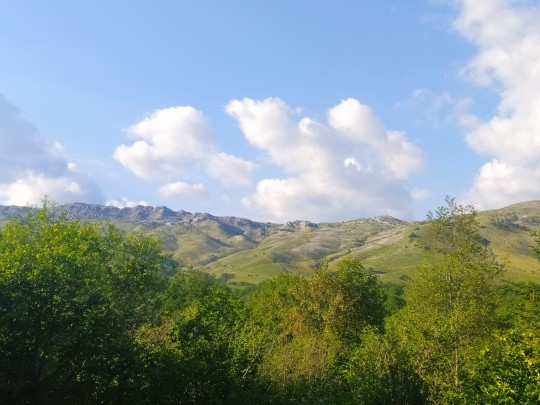
#mywork
(posted)
#nature#photography#wallpaper#explore nature#summer#love#mountains#aesthetic#art#green#clouds#skylovers#slavic#pagan#balkan#small village#cottagecore#kiss#nostalgia#nostalgic#2016#chill vibes#good vibes
14 notes
·
View notes
Photo
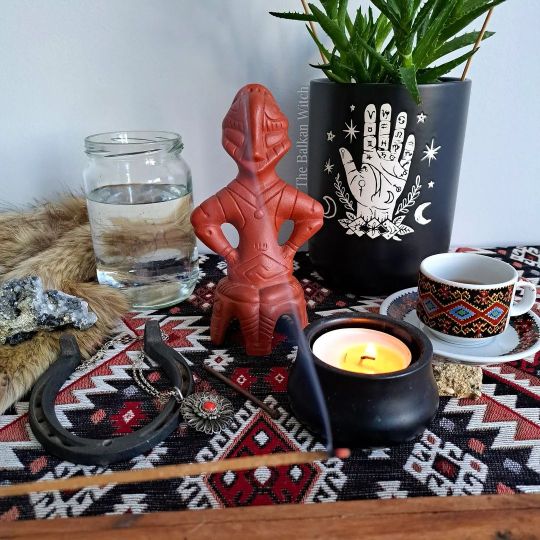
Monday E hënë Moon-Day • Who’s bright idea was it to start the work week on Monday, aka MOON-day? I have no idea, but I’m willing to bet a lot of money it was a man 🤣 • Of course, you could say it’s not that deep, this is just a day of the week, but each day carries specific energy with it. Each day is named after a specific entity or planet that carries specific energy and power with it. Hence, MONDAY – MOON DAY - e hënë • Mondays are not for seizing the day aggressively and getting shit done. Mondays are for starting slowly; an intuitive and meditative day. I think this is one of the reasons why so many people struggle to start the work week on Mondays; our bodies intuitively feel that these actions are not in alignment with the day (that and of course capitalistic exhaustion). • So if you’re feeling like you just can't get in the right head space and get on that “Monday grind,” it’s not just you. Try to take it easy. You can still be productive on Mondays, just in a more passive way. Plan rather than execute. If you usually feel sluggish or moody, keep that in mind when scheduling meetings or if you have to interact with others. And of course, try to get a good night’s sleep Sunday evening and stay hydrated! Save your exertion and energy for a fiery, action-oriented day like Tuesday (e martë) or Thursday (e enjte). • You got this • • • #thebalkanwitch #witch #shtriga #yshtese #dijes #witchblr #witchcraft #magick #magji #magjik #balkan #balkanwitchcraft #Albanian #albanianfolk #albanianwitch #hana #astrology #zodiac #pagan #spellwork #folkpractice https://www.instagram.com/p/CnNK8GUutWc/?igshid=NGJjMDIxMWI=
#thebalkanwitch#witch#shtriga#yshtese#dijes#witchblr#witchcraft#magick#magji#magjik#balkan#balkanwitchcraft#albanian#albanianfolk#albanianwitch#hana#astrology#zodiac#pagan#spellwork#folkpractice
3 notes
·
View notes
Text
Any suggestions for english (or swedish) literature on the natural faiths from Finland and Slovakia (and the balkans)?
It seems my local library has absolutely 0 on ethnographic topics, or just the very basic runestone fact book (not even a picture index 😭).
I feel there is an empty space I must fill with trinkets of knowing.
#please help#pagan witch#pagan#pagan worship#indigenous religion#mythology#balkan#scandinavia#finland#slovakia#education#witchcraft#book recommendations#book rec asks
2 notes
·
View notes
Text
Cernunnos: The Good Liar
And now that I've probably offended a few people with my snazzy new epithet for the guy, it's time for me to try to spill some UPG all over this page.
Cernunnos is very special to me; he was the first deity to reach out to me and he's been a central point of my practice for as long as I've been active in it (there've been a few accidental hiatuses). He's introduced me to my second most important deity, the Horned Serpent, and through that, pointed me down the path I now currently walk.
I think, at least in GaulPol, he's pretty well known as a liminal deity, but that one has never quite sat perfectly for me. I think as I present my notes of my UPG, it'll become clear that Cernunnos as I understand him is more of a "union of opposites" than a "between all things" - something I definitely wouldn't have been able to enunciate not long ago.
First I remember not really having a clear way to describe him beyond "Druid, I think", which would at first glance look like a liminal role if it weren't for the fact I couldn't quite square that away in my head. And then I gave him a couple epithets, "Keeper of Secrets" and "Provider of Ecstacy" (both of these were written back to back, in the same prayer, and I still stand by them).
Then I began using the title "Songmaster(s)" for the three main deities on the interior of the Gundestrup Cauldron - Cernunnos, Taranis/the wheel god, and the Mother-Queen - and I began to look at music as a way for the gods to create, not just stories but create reality itself.
The next major one I remember is writing a prayer and sharing it with a Discord community October 31st 2022:
Songmaster, First Dancer
Truth is your friend and secrets are your trade
Madness, your tool, peace, your accomplishment
Your quiet patience is unshakeable, and your quick action is keen
And recently, as I was singing and trying to reflect on his relationship with the Mother-Queen, I found myself scribbling down some notes from a song I didn't fully intend to sing, addressed to him (quotes are exact lines):
"she shines on you, and you grow"
Shadow, child of sun; darkness, friend of light
"embrace light, embrace night all the more"
I heavily associate the Mother-Queen with the sun, light, and fire, and have had the thought "her light touches all things" in my head for a minute, and Cernunnos I associate with a dark, shadowy forest because of a couple of intense experiences, so the poetic play there was pretty obvious, but it took me a bit to start piecing out what this is all supposed to mean. One friend pointed out that, as we learn, as truth is illuminated to us, it also reveals how deeply our ignorance runs. Which I definitely think is a solid read, but for me personally, for my relationship with him specifically, I think it's deeper than that.
I've also come to believe that the interior panels of the Gundestrup Cauldron are a loose guide of what kind of religious life was expected of the practitioners, so I take it as a loose guide for me. And honestly, going into detail is going to require probably multiple series, but for now suffice it to say that I believe that, when we die, some of those people will be selected to try and earn a kind of divine status. I believe Cernunnos' primary role as depicted on the Gundestrup Cauldron is in teaching harmony between individuals and possibly between the natural world. I also interpret the Horned Serpent as the guide for those who've been chosen to try their hand at earning divinity. So in this context, Cernunnos is the teacher and the Horned Serpent a kind of deliverer.
Okay, that's all well and good, but what does that have to do with the rest of this rant? I've come to the conclusion that, if the Mother-Queen reveals, then Cernunnos' role to her is that he obfuscates. That he purposefully obfuscates certain truths in order that his devotee can learn. I think it's because there are certain lessons that can't really be told - not if you plan on these lessons actually sticking. Wisdom is earned, not given.
Hence the new epithet, "The Good Liar" - he who obfuscates things behind silence or confusing ideas that his student might find truth on their own accord, and come to a new and better place, perhaps even arming his devotees with the skills to move through whatever trials may await us after death.
#balkan paganism#celtic paganism#gaulish polytheism#personal gnosis#thracian polytheism#dacian polytheism#thracian#dacian#Gundestrup Cauldron#reconstructionism
21 notes
·
View notes
Text

Growing up in the heart of the Balkans, I have been intimately woven into the tapestry of a unique ancient tradition known as Gromnica ( Gromnitsa) . Derived from the word "grom," which translates to thunder, and the creation of the Thunder Candle.
Gromnitsa, in particular, involves the sacred ritual of blessing candles and the creation of a distinctive candle known as the Thunder Candle (Gromnica) ." This candle, often adorned with intricate decorations, symbolizes the power of lightning or thunderbolt. Folklore says that the blessed candles and the Gromnitsa carry a protective aura, guarding against storms and malevolent energy. The Thunder Candle should be lit during hard thunderstorms or whilst someone in the household is ill, or on their deathbed.
Many lit candles are taken home to illuminate the household, symbolizing the spreading of light and the warming of the Earth, the awakening of Nature. Some communities also engage in processions or rituals meant to ward off evil and ensure a prosperous and safe year.
This centuries-old custom is intricately tied to the celebration of Candlemas, an event observed on February 2nd that blends Christian and pre-Christian customs. In the Eastern Orthodox Church, Candlemas marks the presentation of Jesus at the Temple and the purification of the Virgin Mary, symbolizing the triumph of light over darkness.
In modern times, the gromnice is stored away carefully for important ceremonies such as a christening, First Communion, Confirmation or Anointing.
While the name "Gromnica" might not be universally used across the entire Balkan region, variations of the Candlemas celebration are observed multiple countries. These customs highlight the cultural and religious diversity of the region, where ancient traditions intertwine with Roman-catholic and Orthodox practices and continue to this day.
.
.
.
.
.
#incense#male witch#gromnitsa#gromnica#catholic#orthodox#pagan#dark photography#ritual#occult#darksouls#stormwitch#faeriemagazine#traditional witchcraft#spirituality#slavic folklore#balkan witchcraft#balkan folklore
45 notes
·
View notes
Text
²⁸ ⁰⁹ ²⁰²³
--[prvi ° anđeo]--
Niti jedno od nas ne zna,
kako se točno našlo ovdje.
Ali svejedno, eto nas
- tu smo.
Stojim nad tvojim tijelom,
polako ga pritišćući ka zemlji,
sa sjekirom u ruci.
Kosa ti je znojem slijepljena
na predivno lice,
a krila raširena u zraku.
Novi dan se već rodio
i prve tople zrake
me nježno dodiruju.
Nikada Mjesecu neću reći
o grijesima
koje me je Sunce
gledalo kako vršim.
I dok stoji iznad nas,
tiho se molim,
da niti ono
ne progovori,
u zoru
ili sumrak.
Mjesec,
i njena ljubav,
su sve što imam.
Nakon što bude gotovo,
nekoliko pera će lebdjeti zrakom.
Vrisak će odjekivati
u mojim ušima,
dugo nakon što se
tvoja krila prestanu trzati.
Možda mu nikada
ne uspijem pobjeći.
To se dogodi -
kada ubiješ anđela
i čuješ zadnji poziv
rajskog grla.
Očima tražiš moje oči
i u užasu gledaš svoje tijelo,
kako se bori
za nešto
što ne zna
da ne može
više imati.
Na tlu koje je dotakla tvoja krv,
bijeli ljiljani su iznikli
- i već procvali.
Jednom davno,
njihov miris bi otvorio Nebesa
i dozvao bijes vašeg Oca,
uz grmljavinu i munje.
Danas taj miris ne doziva ništa.
Možda Boga
jednostavno
nije briga.
A možda je okrenuo glavu na drugu stranu,
previše osramoćen
grijesima koje je sam počinio,
da bi meni sudio
što oduzimam život
nečeg tako čistog.
Krv iz tvoje glave
će mi se slijevati po prstima,
kada ju podignem
i poljubim ti još tople usne
- tri puta.
Iako je tvoj vrat dotakla sjekira,
jedan dio mene umire.
Mislim
da je nemoguće oduzeti život
i ostati potpun.
Ali to je cijena
koju voljno plaćam,
jer znam sve zločine
koje su tvoje ruke počinile,
od početka vremena,
u Njegovo ime.
Kada ti otkinem krila
sa beživotnog tijela,
zvuk kostiju koje pucaju
će odjeknuti svemirom.
Taj zvuk će biti upozorenje
svim anđelima
koje je Otac stvorio.
Jer ti si tek prvi,
od svih koji će pasti.
Možda
već sad bježe,
u najdalje kutove
mraka i svjetla.
Možda,
kao što si i ti,
šapuću molitvu
Bogu kojem je došao
dan presude.
Ali ja znam budućnost,
Morana mi ju je pokazala
u svojim očima
- niti jedan anđeo
neće zadržati
svoja krila ili glavu;
a zadnji će pasti Otac.
.
0 notes
Text


🥀 🔮🔮🔮🔮🔮🥀
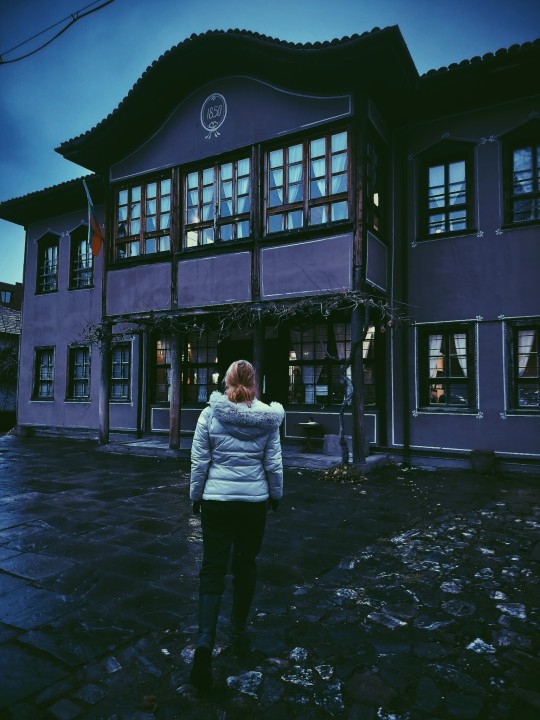
#dark#dark academia aesthetic#dark academia#light#light academia#vibes#darkvibes#winter vibes#academia#witchcraft#pagan witch#balkan girl#style#dark aesthetic#horror#travelling
1 note
·
View note
Text

ALSO DID YALL NOTICE THE МАРТЕНИЧКИ/MĂRȚIȘOR ON BUL'S CHEST AND RO AND MOL'S HATS
basically мартенички are red/white twisted threads that are given out to friends, relatives, colleagues on 1st of march in bulgaria, it has an ancient balkan pagan origin
in romania, they have mărțișor which is something similar but it's worn mostly by women and kids, men wore it rarely
basically these red/white threads are tied to blooming trees if u see a swallowtail or a stork or a blooming tree, the point of the custom is to bring fortune to the wearer (in bulgaria, there used to be this custom where u put the martenitsa under a big rock and later, you'd look under the rock and make omens based on what ur seeing - types of bugs, worms, etc)
also, interestingly, there's the figure of баба Марта in bulgaria and the figure of baba dochia in romania - they're some sort of temperamental grandmas who can be very cruel, bulgarian baba marta can be angry but she can also quickly become calm and happy, this references the quick weather changes in march
perhaps there was some sort of dacian/thracian elderly female deity that had something to do with fertility, fortune and spring? maybe this is the origin of the holiday?
#hetalia#aph bulgaria#hws bulgaria#hetalia bulgaria#aph romania#hws romania#hetalia romania#balkan#culture#aph moldova#hws moldova#hetalia moldova
87 notes
·
View notes
Note
I just saw that Tor is publishing an anthology of Greek myth retellings that's being billed as "inclusive" but there's not a single Greek author included. When Greek authors who would've loved to participate called it out, people claimed they weren't the true inheritors of their own ancient culture because they're too Christian, too Eastern, too tax-evading, too whatever. Like, someone literally said that Greeks have little to contribute to SFF because they're too busy making cheese and not paying taxes.
Let me be clear: there's nothing wrong with anyone doing a Greek myth retelling. Classical antiquity is the foundation of Western cultural values, for better or worse (often worse). Doing mythology retellings also gives you instant brand recognition as a writer and increases your chances of finding readers. But this is exactly why it's important to let the inheritors of the culture benefit and not gatekeep them out in the name of some cliquey idea of inclusivity.
As a Balkan Slav with connections to Greece and its diaspora, I have experienced discrimination in the Anglophone world and have seen Greek people face something similar. A lot of the same stereotypes exist about us. The Anglo stereotypes about us are arguably worse because of the civil war, and we're more orientalized because of a longer period of Ottoman occupation and a substantial Muslim presence. Slavic people also get to see our pagan mythologies coopted by American fantasists with no ties to that part of the world, and the stories are usually kitschified into, like, a monocultural/monoethnic airport-souvenir-nesting-doll or baba-yaga-cottagecore version of the folktales ready for Western consumption.
Anyway, why is there so little room in the publishing industry for the people who grew up with this cultural heritage even if they might hold beliefs or practice traditions that emerged later? Many Greeks today are devout Orthodox Christians, but that doesn't mean that a random WASP who identifies as a neo-Hellenist has a greater claim on THEIR ancient heritage. And the contributors to the Tor anthology probably just see ancient Greece as a dead culture with the added benefit of being white and thus cultural appropriation-proof. But it's all kind of giving Never on Sunday and not in a good way.
--
180 notes
·
View notes